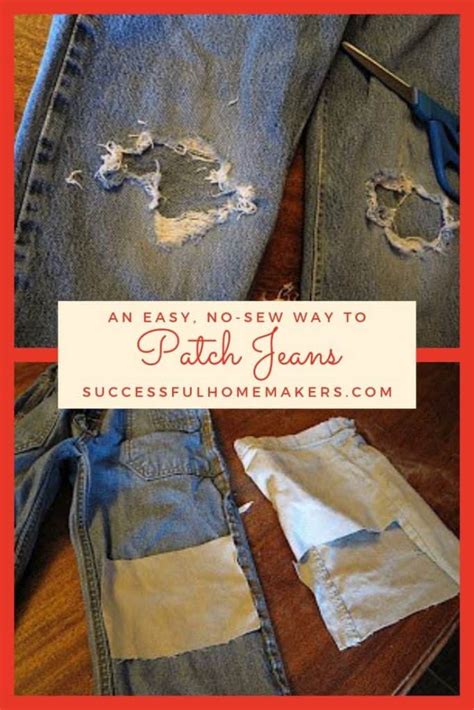Long-Lasting No-Sew Patching: The Ultimate Guide
Torn jeans? A hole in your favorite shirt? Don't despair! Before you toss that beloved garment, consider the power of no-sew patching. This guide will equip you with the knowledge and techniques to create long-lasting, virtually invisible repairs, saving you time, money, and your favorite clothes. We'll explore various methods, materials, and tips to ensure your patches stay put, wash after wash.
What You'll Need for No-Sew Patching
Before diving into techniques, let's gather the essential materials. The beauty of no-sew patching lies in its adaptability; you likely already have many of these items at home.
- Patches: Fabric scraps, iron-on patches (pre-made or custom-cut), fusible interfacing, or even leftover pieces from other projects work wonders. Choose a fabric that complements the garment's texture and color as closely as possible for the most discreet repair.
- Iron: A reliable iron is crucial for most no-sew methods. Ensure it's clean and in good working order.
- Ironing Board: A stable ironing board is essential for even heat distribution and to prevent damaging your garment or furniture.
- Parchment Paper or a Pressing Cloth: This protects your fabric from scorching or discoloration during ironing.
- Fabric Adhesive: For certain techniques, a strong fabric adhesive (like fabric glue or a fusible adhesive web) is needed to secure the patch in place.
Different No-Sew Patching Techniques
Several methods offer long-lasting results. Let's explore the most effective options:
1. Iron-On Patches: The Easiest Method
This is the quickest and simplest method, ideal for smaller holes or tears. Simply follow the manufacturer's instructions on the iron-on patch packaging. Generally, this involves placing the patch over the hole, covering it with parchment paper, and applying firm, even pressure with a hot iron for the specified time.
2. Fusible Interfacing: Invisible Repairs
Fusible interfacing is a thin, adhesive-backed fabric that melts when heated, bonding the patch to the garment. This method is excellent for creating virtually invisible repairs, especially on delicate fabrics. Cut a patch slightly larger than the hole, place it on the wrong side of the fabric, cover with parchment paper, and iron according to the interfacing's instructions.
3. Fabric Adhesive: For Larger Repairs and Stronger Holds
Fabric glue or a liquid adhesive provides a strong bond, ideal for larger repairs or areas subject to significant stress. Apply the adhesive to both the patch and the garment according to the manufacturer's instructions. Ensure the surfaces are clean and dry for optimal adhesion. Hold the patch in place for a few minutes to allow the adhesive to set.
4. The "Basting & Iron" Method: Combining Techniques for Durability
This technique offers extra security and is great for larger repairs. First, baste the patch in place using a needle and thread. Then, iron the patch firmly, applying pressure to ensure the basting stitches are mostly concealed and the patch is securely bonded.
Addressing Specific Concerns: FAQs
Here are answers to some common questions about no-sew patching:
How long do no-sew patches last?
The longevity of a no-sew patch depends on the method used, the fabric's quality, and the garment's usage. With proper application, many no-sew patches can withstand numerous washes and wear for months or even years.
Can I wash clothes with no-sew patches?
Yes! Most no-sew patches are washable, but it's crucial to follow the care instructions for both the patch and the garment. Air drying is often recommended to prolong the patch's lifespan.
What types of fabric are best suited for no-sew patching?
No-sew patching works well on various fabrics, including cotton, denim, linen, and blends. However, extremely delicate fabrics might require a more gentle approach or a different repair method.
What if my patch starts peeling?
If a patch starts peeling, you can try reapplying heat with an iron or adding a small amount of fabric glue to reinforce the bond. If the damage is significant, you might need to remove the patch and try a different method.
Conclusion: Embrace the Art of No-Sew Patching
No-sew patching is a valuable skill that extends the life of your clothes and saves you money. By mastering these techniques and selecting the appropriate materials, you can enjoy long-lasting, virtually invisible repairs, keeping your favorite garments in tip-top shape. So grab those fabric scraps, and start patching!

